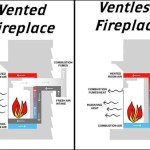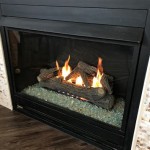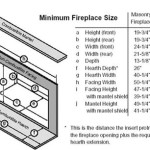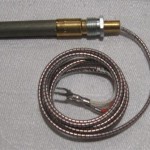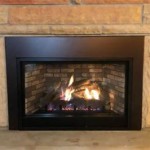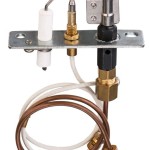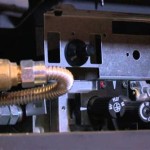The Role of a 40 Lb Propane Tank in Fireplaces
Propane-fueled fireplaces offer a convenient and efficient alternative to traditional wood-burning fireplaces. They provide instant heat, require minimal maintenance, and eliminate the need for wood storage and ash disposal. A crucial component of any propane fireplace system is the propane tank, which serves as the fuel reservoir. Among the various sizes available, the 40 lb propane tank is a common choice for residential use, offering a balance between capacity and manageability.
Understanding the capabilities and considerations associated with a 40 lb propane tank is vital for ensuring safe and effective fireplace operation. This includes assessing the tank's capacity, usage rate, safety features, and proper handling procedures. Choosing the correct tank size, understanding its fuel consumption, and adhering to safety guidelines are essential for a positive and hazard-free experience. This article will explore the various facets of utilizing a 40 lb propane tank for fireplaces, offering detailed information relevant to homeowners and professionals alike.
Propane, also known as liquefied petroleum gas (LPG), is a hydrocarbon gas that is compressed into a liquid state for storage and transportation. It offers a high energy density, making it an efficient fuel source for heating applications. When used in a fireplace, propane is combusted to produce heat and generate realistic-looking flames. Propane fireplaces are available in a wide range of styles, from traditional units that mimic wood-burning models to modern designs that incorporate contemporary aesthetics. They are often equipped with features such as adjustable flame height, thermostatic control, and remote operation, enhancing convenience and user experience.
Tank Capacity and Burn Time
The capacity of a 40 lb propane tank is a primary factor in determining how long it can fuel a fireplace. A 40 lb propane tank holds approximately 9.4 gallons of propane. This volume translates to roughly 420,000 British Thermal Units (BTUs) of energy. The BTU rating of a propane fireplace is a critical parameter that determines its heat output and fuel consumption rate. Fireplaces with higher BTU ratings will consume more propane per hour compared to those with lower ratings.
Calculating the burn time of a 40 lb propane tank involves dividing the total BTU content of the tank by the fireplace's BTU consumption rate. For instance, if a fireplace has a BTU rating of 20,000 BTUs per hour, a 40 lb propane tank will provide approximately 21 hours of continuous operation (420,000 BTUs / 20,000 BTUs/hour = 21 hours). However, in reality, the fireplace is rarely run continuously, and the actual burn time will depend on usage patterns, flame height settings, and the efficiency of the fireplace itself.
It's important to note that the stated BTU rating of a fireplace is typically the maximum output. When the fireplace is set to a lower flame height, the propane consumption rate decreases accordingly. Consequently, the burn time of the tank will be extended. Therefore, users can manage propane consumption by adjusting the flame height to achieve a balance between desired heat output and fuel conservation.
Ambient temperature can also influence propane consumption. In colder temperatures, the fireplace may need to operate longer or at a higher flame setting to maintain the desired room temperature. This will result in a faster depletion of the propane tank. Conversely, in warmer temperatures, the fireplace may operate less frequently, leading to a longer burn time per tank.
The efficiency of the fireplace itself plays a role in the overall burn time. Some fireplaces are designed with features that optimize combustion and minimize heat loss, resulting in greater fuel efficiency. Regular maintenance, such as cleaning the burner assembly and venting system, can also help to improve efficiency and extend the burn time of the propane tank.
Safety Precautions and Handling Procedures
Propane is a flammable gas, and safety precautions must be strictly adhered to when handling and storing propane tanks. Improper handling can result in leaks, fires, or explosions. It's imperative to follow all applicable safety codes and regulations, as well as the manufacturer's instructions for the fireplace and propane tank.
Propane tanks should be stored outdoors in a well-ventilated area, away from any sources of ignition, such as open flames, sparks, or heat. They should be placed on a level surface and secured to prevent them from tipping over. Avoid storing propane tanks in enclosed spaces, such as garages or basements, as propane can accumulate and create a hazardous atmosphere.
When connecting or disconnecting a propane tank, ensure that the fireplace is turned off and that there are no open flames or sources of ignition nearby. Use a wrench to tighten the connections securely, but avoid over-tightening, which can damage the fittings. Before using the fireplace, inspect the connections for leaks by applying a soap and water solution to the fittings. If bubbles appear, there is a leak that needs to be addressed immediately.
Propane has a distinctive odorant added to it, which allows for easy detection of leaks. If you smell propane, immediately turn off the gas supply at the tank, evacuate the area, and contact a qualified propane technician or the fire department. Do not attempt to locate or repair the leak yourself, as this can be extremely dangerous.
Regularly inspect the propane tank, regulator, and hoses for any signs of damage, such as rust, corrosion, cracks, or abrasions. Replace any damaged components immediately. It's also advisable to have the fireplace and propane system inspected annually by a qualified technician to ensure that they are functioning properly and safely. This inspection should include checking for leaks, assessing the condition of the burner assembly and venting system, and verifying that all safety controls are working correctly.
When transporting a propane tank, secure it properly in the vehicle to prevent it from rolling or shifting. Ensure that the tank is upright and that the valve is closed tightly. Avoid transporting propane tanks in the passenger compartment of a vehicle. If possible, transport them in the trunk or cargo area.
Familiarize yourself with the emergency procedures for propane leaks and fires. Know the location of the gas shut-off valve and how to operate it. Keep a fire extinguisher readily available in case of a fire. In the event of a propane emergency, do not hesitate to call 911 or the fire department.
Alternatives and Considerations for Larger Spaces
While a 40 lb propane tank is a suitable option for many residential fireplaces, it may not be the most practical choice for all situations. For larger spaces or fireplaces with high BTU ratings, a larger propane tank, such as a 100 lb tank or a permanently installed tank, may be more appropriate. The primary advantage of a larger tank is that it provides a longer burn time, reducing the frequency of refills. This can be particularly beneficial for homeowners who rely on their propane fireplace as a primary heat source during the winter months.
A 100 lb propane tank holds approximately 23.6 gallons of propane, which is more than double the capacity of a 40 lb tank. This increased capacity translates to significantly longer burn times, potentially reducing the inconvenience of frequent tank replacements. Permanently installed propane tanks, which can range in size from 120 gallons to over 1,000 gallons, offer the greatest capacity and are typically used for homes that utilize propane for multiple appliances, such as heating, cooking, and water heating.
The decision of whether to use a 40 lb tank or a larger tank depends on several factors, including the size of the space being heated, the BTU rating of the fireplace, the frequency of use, and the available space for tank storage. If the fireplace is used only occasionally for supplemental heat, a 40 lb tank may be sufficient. However, if the fireplace is used frequently or for extended periods, a larger tank may be more practical. Furthermore, homeowners should consider the cost of propane refills and the convenience of having a larger supply on hand. While larger tanks require a greater initial investment, they may offer cost savings over the long term by reducing the frequency of refills and potentially qualifying for volume discounts from propane suppliers.
Another consideration is the aesthetic impact of the propane tank. A 40 lb tank is relatively compact and can be easily concealed behind landscaping or within a decorative enclosure. Larger tanks, however, may be more difficult to conceal and may detract from the overall appearance of the property. In such cases, homeowners may need to explore alternative tank placement options or invest in more elaborate concealment measures.
Finally, it's essential to consult with a qualified propane technician or fireplace installer to determine the appropriate tank size and installation requirements for your specific application. They can assess your heating needs, evaluate the available space, and recommend the best solution for your situation. They can also ensure that the propane system is installed safely and in compliance with all applicable codes and regulations.

Flame King Ysn401 40 Pound Empty Propane Cylinder With Overfill Protection Device Valve For

Flame King 40 Lbs Horizontal And Vertical Hog Propane Cylinder With Wheels Ysn40hog The Home Depot

Flame King 40 Lbs Horizontal And Vertical Hog Propane Cylinder With Wheels Ysn40hog The Home Depot

Residential Propane Tanks What Size Tank Do You Need

Gas Fireplace Propane Tank The Ultimate Guide Dreifuss Fireplaces

Flame King 40 Lbs Horizontal And Vertical Hog Propane Cylinder With Wheels Ysn40hog The Home Depot

Flame King 40 Lbs Horizontal And Vertical Hog Propane Cylinder With Wheels Ysn40hog The Home Depot

Flame King 40 Lbs Horizontal And Vertical Hog Propane Cylinder With Wheels Ysn40hog The Home Depot

Used Propane Tank Fireplace Wood Stove Diy Gas Bottle Burner

General Guidelines For Propane Tank Placement Indoor Comfort Marketing
Related Posts

